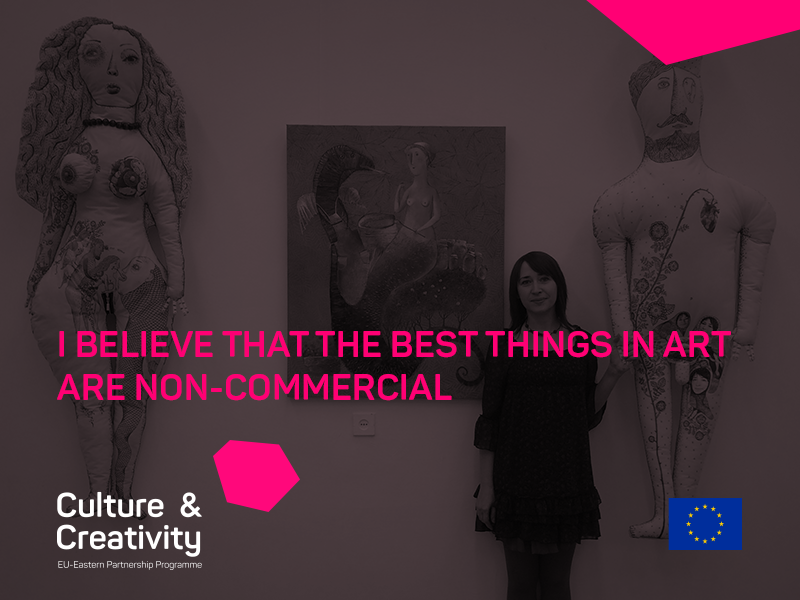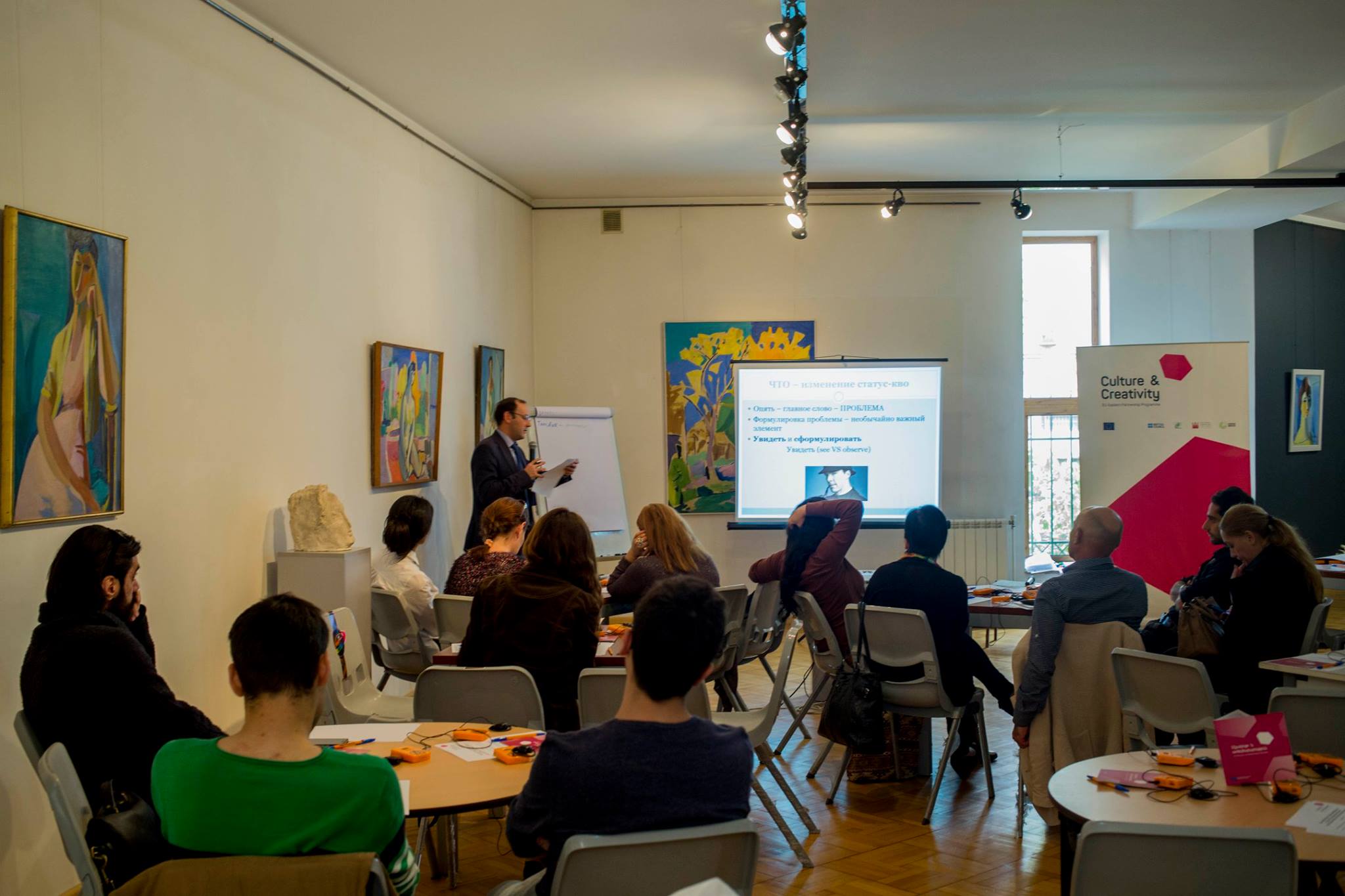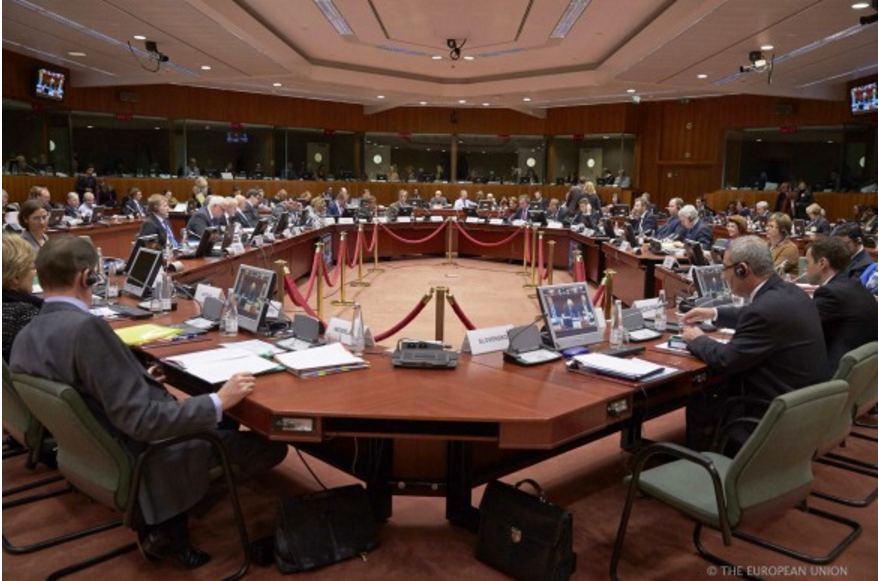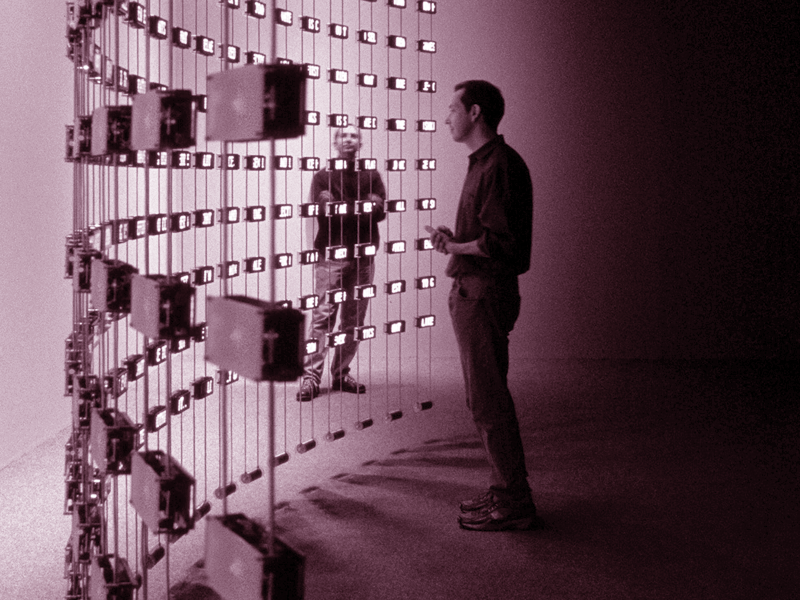
Anna Silivonchik and Vasil Peshkun: Canvas, Oil, Web
Anna, you actively promote your works in social networks, and you have roughly 16,000 friends on Facebook. You keep your own artistic blog and have a website. What possibilities offered by social networks are the most valuable for artists and creative people?
Anna: This way much more people can see your works than during a simple exhibition. And those people come from different corners of the world. You can meet interesting creative people who think like you, and receive offers of collaboration.
Vasil: Through Facebook I constantly discover new names of artists, see fresh works by colleagues, which inspires me to create.
Do you establish business contacts through social networks? Do you receive proposals that subsequently turn into creative projects? Could you tell us about some of the most interesting ones?
Anna: This happens all the time. Nowadays, the majority of invitations come precisely through the Internet. It’s difficult to identify something as most interesting. Perhaps the most unexpected was a collaboration proposal from a Korean clothing brand. After all, South Korea is such a distant country, and people there have different tastes and views. I was pleasantly surprised that they were drawn and interested in my works that they simply saw online.
Vasil: I’m a far less active internet user than Anna. But I still periodically receive offers to take part in exhibitions and plein-air events through social networks and other virtual communication channels. Thus, for example, a few years back I got into a plein-air event in beautiful Montenegro.
Which works get the most “likes” according to what you see?
Anna: It’s difficult for me to establish some kind of a trend in this regard, but very often they are totally not the works that I like personally and that I find most successful.
Vasil: Of course, most people are attracted to brighter works, more joyful ones. Or something that is consonant with their mood, close to them, familiar and recognisable. In addition, when the artist does something completely uncharacteristic of his work or something unexpected, this also “shoots up” in social networks.
How do online exhibitions differ from real ones? Is there any sense in creating expensive exhibition projects when technology offers limitless possibilities of online exhibitions?
Anna: Well, photos and video on a screen do not offer the fullness of experience and do not replace live communication with an art object. Especially that modern exhibition projects appeal simultaneously to various senses and include visual, auditory parts, even smells and tactile sensations are used. The Internet is not capable of that for now.
Vasil: Painting should be seen live. It looks very different on photos. You can’t see the differences in texture, the size of the painting, colours are not reproduced accurately. And in a certain lighting, in the right exhibition space, paintings are perceived differently than in a cluttered studio or in a photo.

Anna, a famous Belarusian company released a clothing line with your prints. You’ve mentioned your collaboration with a Korean women’s clothing firm that also released a line of outerwear and clothing with your works, as well as shoes and bags. Did you create sketches expressly for these orders?
Anna: No, I proposed works that were already ready at the time. And I happily wear these clothes myself. Now this Belarusian company has announced a competition for young artists and designers with whom it plans to collaborate in the future. This is very nice. Collaboration with the company from South Korea, yes, that was a surprise. They asked me to send sketches of my own choice. They were all approved; I only created one work especially for the project. My works go well with women’s clothing.
Anna, Vasil, your work is very different: the palette, themes, presentation, style, all differ very much. How do you maintain your individuality while still working together? Do you criticise each other, talk about your work?
Anna: Yes, we do criticise, evaluate each other’s work, but without pressuring each other. Rather we give advice, try not to put pressure through our opinions: if you ask, I’ll tell you.
Vasil: Sometimes you’re in a dead-end and don’t know what to do. Anna can help with advice.
What are the main themes in your work?
Vasil: For example, rural life. In the summer we go to the open air, that’s why in Anna’s work there are village houses, chickens and roosters, old women, sunflower seeds, etc. I have landscapes, countryside.
Anna: “Rural” themes often echo Belarusian folklore and traditions. Of course, I reinterpret it. The way I see modern life in the village. Another theme is love, relations between men and women. Philosophical and moral issues that concern each one of us. For example, the meaning of life.
Anna, in your works there are also highly social themes, such as feminism, emancipation. How do you manage to present such issues in an attractive, fabulous manner?
Anna: My works reflect what I see in life. I don’t go through whether my opinion will be interesting to people in any particular theme. I never set myself goals for the future. It’s rather personal. It is a very subjective view of social issues. Yes, I’m concerned about them, as any other person is. But it’s all very subjective.
Vasil: Viewers see these ideas and understand them. I think that in Anna’s works there’s humour and fairy tales. They’re not too serious.
Anna: I believe that in life there are not that many situations that are a real drama. Only if there’s a tragedy with human victims… Everything else can be treated with humour.
Vasil: First Anna paints five children’s fairy-tale works, she gets bored. She picks up difficult subjects. All creative work is built on contrast. It depends on the mood. You’re not going to milk the same theme all your life.
Anna: Yes, I like showing contrasts, the clashing of “black” and “white”, intensity and strong emotions. When opposites intertwine in a complex tangle. And it is no longer clear whether this is love or hatred… It is this interaction, conflict, humour and tragedy that is present in my works.
Anna, your heroine is the modern woman?
Anna: Yes, the woman, but not always.
Vasil: Anna’s heroines are feminine, but often powerful. Men are mainly subservient.
Anna: These are the woman whom I see around me. That’s the type of woman I come across most often.
The intensity and contrast that you talked about was the idea of your joint exhibition called The Secret Room held in Minsk of late. Thanks to this difference, the exhibition was at once academic and bold.
Anna: The overarching goal of our joint exhibitions is to bring together what is incompatible, completely different. This is difficult but exciting. The space where the exhibition is taking place plays a role too. The Centre for Contemporary Arts in Minsk is not one big space, but a series of small rooms, and this too played a role. Some rooms held the works of only one of us, and others were joint rooms. The distribution was by rooms, not by concept. We did not oppose each other’s work.
Vasil: The main thing here is that there are common themes in the works.
And do you have common themes?
Anna: Yes, for example, there was a “dining” room. Vasil had still lifes from nature as exhibits. I had works with elements of still lifes, but as an addition to the theme, stories happening around.

Did you come up with the concept for the exhibition on your own, or did someone propose it? After all, it’s 11 exhibition rooms, together you exhibited more than 100 works and 11 installations.
Anna: The concept of the exhibition was suggested by the space of the CCA and the desire to combine our different works into one whole. The exhibition was titled The Secret Room and we wanted the walk through the rooms, of a house we created, become a quest of sorts with the search for keys to that secret. We had charged the title with several meanings.
-
First, it is the concept of a “secret room” as a place inside the soul of a person, where he or she hides his or her dreams and hopes, vulnerability, and maybe even hidden desires and fears.
-
Second is the door into another dimension, a corridor to another world.
-
Third, for us as artists, “secret room” is a synonym of creativity. Because creativity is the possibility to express our innermost feelings and thoughts, and a work tool with its own problems and fears, and immersion in another reality.
Vasil: Anna came up with everything. The works were ready. We created the installations specifically for the exhibition, which we made just over a month ahead of time.
As is known, the reviews of The Secret Room were quite contradictory…
Vasil: They complained about us to the Ministry of Culture!
Anna: One of the visitors was perhaps uncomfortable with the nudes in the works. She complained to the Ministry. But we’re not offended because, thanks to that complaint, an official delegation headed by the Minister visited our exhibition.
Vasil: There were deputy ministers and other ministry employees. They expressed the wish that some rooms have a sign saying: Not recommended for children under 18. Although, in my opinion, everything was decent, within the boundaries of what is acceptable.
In what context does the contemporary Belarusian artist live? Is there an internal conjuncture that impacts the development of contemporary painting? What is missing in your opinion?
Anna: Our traditional and current, ultra-contemporary arts are separate and exist in accordance with different rules. For artists who choose one of these directions, everything is very different: the audience, development paths, exhibition platforms, income. After all, traditional art is more accessible for the state and approved by people.
Vasil: Classicism in painting will never be obsolete. It’s always relevant. When they say “he works in the classical style, it’s no longer of interest to anyone”, etc. I absolutely don’t agree with this. What matters is that the work be of good and professional quality. This is a universal rule, which applies both to classical painting and to ultra-contemporary works.
Anna: In Belarus, I don’t know of a single museum or collector who would acquire video works, for instance. Works in new art mediums do not sell. It turns out that the most an artist who works in “new media” can hope for is to receive money for the materials used. That is why everyone is focusing on traditional art forms: canvas, oil, drawing, sculpture, ceramics, etc.
Although I believe that the best things in art are non-commercial. Everyone wants to try his hand at contemporary art. It would have been great if there was a market for works in new media and current art forms – the artist could afford to create interesting projects of scale.
Is the audience ready to understand and accept such new forms?
Anna: Art is not a mass phenomenon in itself. The artist does not aim for a broad audience. But rather on his or her narrow circle. It is one thing when the artist consciously adapts to the expectations of the audience, and another when the ideas of the artist and the viewer coincide.




